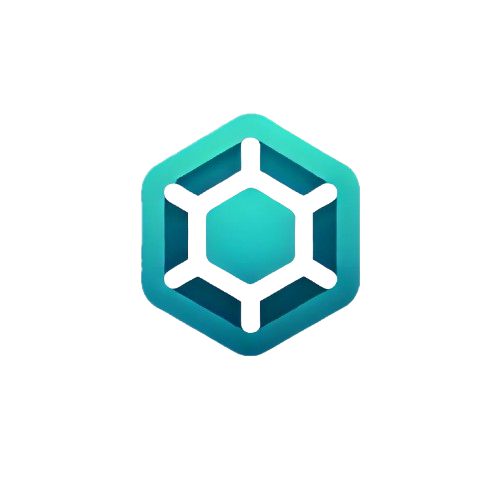· Sweady Team · Developer Productivity · 5 min read
Turning Test Anxiety into Motivation—Today’s Guide
Discover actionable steps to convert test anxiety into a driving force for innovation. Learn how Sweady’s GitHub and Slack integrations can transform your code review process into a more collaborative, stress-free experience.
this section is constant and should not be updated author: ‘Sweady Team’
Turning Test Anxiety into Motivation—Today’s Guide
Welcome to today’s guide on transforming test anxiety into motivation! As software developers and tech enthusiasts, we constantly face situations that test our capabilities, from coding assessments to continuous integration and delivery processes (CI/CD). These tests can often stir up anxiety, but with the right approach, we can use this anxiety as a driving force toward success.
At Sweady, we’re passionate about helping development teams improve productivity and collaboration through streamlined code review processes. This guide aims to provide actionable insights for developers facing test-related stress, improve your team’s workflow, and foster an environment that turns challenges into opportunities for growth and success.
Understanding Test Anxiety
Test anxiety is a common experience among developers. It can manifest as a sense of dread before an important code review or stress during a live coding session. Here are some signs to look out for:
- Physical symptoms: Sweaty palms, increased heart rate, or a tight stomach.
- Cognitive symptoms: Difficulty concentrating or remembering tasks.
- Emotional symptoms: Feelings of fear or helplessness.
Understanding these symptoms is the first step in managing anxiety effectively. The good news is that test anxiety can be transformed into motivation with the right strategies.
Turning Anxiety into Motivation
The goal is not to eliminate anxiety but to channel it into something positive. Here are some ways to transform test anxiety into motivation:
1. Preparation is Key
Proper preparation significantly reduces anxiety.
Create a Study Plan: Break down your preparation into smaller, manageable tasks. Use project management tools like Trello or Asana to keep track.
Practice Routinely: Regular coding practice helps build familiarity and confidence. Websites like LeetCode or HackerRank offer practice problems that mimic real test scenarios.
2. Adopt a Growth Mindset
Believe that skills can be developed through effort.
Learn from Mistakes: If a test doesn’t go as planned, treat it as a learning opportunity instead of a failure.
Seek Feedback: Continuous feedback is crucial. Integrate tools like Sweady’s automatic Slack channels for pull requests to facilitate easy communication and rapid feedback.
3. Focus on Process, Not Outcome
Concentrate on the steps you can control.
Mindfulness and Meditation: Regular meditation helps in staying present. Apps like Headspace or Calm offer quick meditation exercises for developers.
Set Realistic Goals: Rather than focusing on achieving perfection, set attainable milestones for progress tracking.
4. Leverage Technology
USE TECHNOLOGY TO YOUR ADVANTAGE.
Automation Tools: Use CI/CD tools to automate testing and integration processes, reducing manual pressure[2]. For example, integrate GitHub Actions with Slack to stay informed on build statuses directly in your communication channels.
Collaborative Platforms: Leverage platforms like Sweady to create dedicated channels for pull requests, enhancing team collaboration and minimizing the anxiety of isolated reviews.
Code Snippet Example: Integrating GitHub Actions with Slack
Here’s a basic example to integrate GitHub Actions with a Slack workflow:
name: CI
on: [push, pull_request]
jobs:
build:
runs-on: ubuntu-latest
steps:
- uses: actions/checkout@v2
- name: Set up Node.js
uses: actions/setup-node@v2
with:
node-version: '14'
- run: npm install
- run: npm test
- name: Slack Notification
uses: 8398a7/action-slack@v3
with:
status: ${{ job.status }}
fields: repo,message,commit,author
env:
SLACK_WEBHOOK_URL: ${{ secrets.SLACK_WEBHOOK_URL }}5. Establish a Support System
You are not alone; leverage your community.
Peer Programming: Pair programming can relieve the stress of solitary reviews and offer a support network.
Mentorship Programs: Participate in mentorship programs within the organization or online communities like Codementor.
Encouraging an Open and Collaborative Environment
Creating a supportive and open workspace culture can have a significant impact on reducing anxiety:
Regular Team Meetings: Encourage open communication and collaboration through regular updates and discussions.
Offer Training Programs: Provide access to online courses and tools that enhance skill development[5].
Celebrate Successes, Big or Small: Recognize individual and team achievements to boost morale[5].
Tailoring Sweady for Anxiety Management
Sweady isn’t just about automating pull request processes. It’s a tool that can alleviate stress by enhancing transparency, communication, and collaboration within teams:
Dedicated Slack Channels: By automatically creating Slack channels for each pull request,[1] teams can focus on collaborative problem-solving rather than dealing with the anxiety of waiting for feedback.
Daily Reminders: Ensure no review is overlooked or delayed,[1] minimizing stress related to missed deadlines or incomplete pull requests.
CI/CD Updates: Stay updated with the latest testing results without having to manually check each status change,[2] offering peace of mind through automation.
Conclusion
Turning test anxiety into motivation is a journey of self-awareness,[5] planning,[5] and using available resources wisely.[1][2][5] By adopting practical strategies[1][2], leveraging tools like Sweady[1], you can transform anxiety into an opportunity for growth[5]and improvement.[1]
Embrace test anxiety not as an adversary but as an ally in your professional development.[5]Share this guidewith your team[1][2][5]and peers[1][2][5]to create aconducive environmentfor lower stressand enhanced performance.[1]
Stay connected,[1][2][5]stay motivated,[1][2][5],and let Sweady help you streamline your development processes![1]
Wantto learn more?**Subscribe toyour newsletter**for latest updates ondeveloper productivity,codereview best practices,and howSweadyyou excel.[1] Current date:[SundayJune08th20251]:46PMUTC If today’s guide on transforming test anxiety into motivation has you curious about how to further enhance your team’s workflow and cut down on review times, you might want to check out our insightful piece on 5 Ways to Reduce PR Bottlenecks Using GitHub-Slack Integration. It’s full of practical tips on optimizing your integration to streamline code reviews, ensuring that your team stays productive and stress-free. Dive in to discover how seamless communication and automation can revolutionize your pull request process!
 Sweady
Sweady